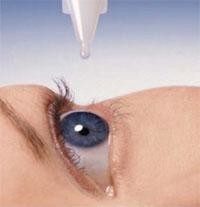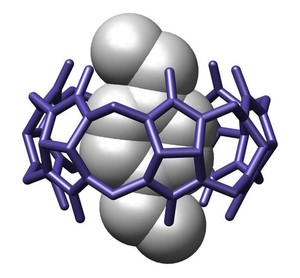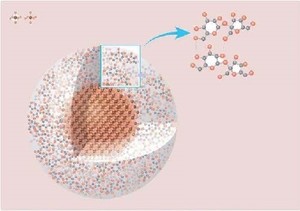Challenges in the assessment of the similarity or equivalence of ophthalmic emulsions as non-biological complex drugs (NBCDs) was a subject discussed at the US Food and Drug Administration’s (FDA) Public Meeting, which was held in June 2016, as part of the agency’s FY 2016 Regulatory Science Initiatives.
During the meeting, in a presentation by Dr Chetan Pujara, Vice President of Small Molecule Product Development at Allergan, the properties of NBCDs were outlined [1], namely that:
• they consist of a multitude of closely related structures
• the entire complex is the active pharmaceutical ingredient
• the properties cannot be fully characterized by physicochemical analysis
• a well-controlled robust manufacturing process is fundamental to reproduce the originator’s product
Dr Pujara points out that emulsions are a complex dosage form because they are locally acting and are multi-dimensional from a formulations perspective. They therefore come under the NBCD definition, for the following reasons:
• Multi-phase systems – contains oil phase, aqueous phase, interface consisting of surfactants and other stabilizing polymers, and micellar structures
• Drug can be distributed in all phases – oil, aqueous, surfactant and micellar structures
• Amount of drug in each phase is in dynamic equilibrium and can shift based on external environment, e.g. heat, shear, chemical interactions, biological interactions
• Manufacturing process is critical to establish oil droplet size, surfactant/oil interactions, polymer/oil/surfactant interactions, drug distribution in each of the phases
The problem
Ophthalmic emulsions are complex systems that are used to deliver poorly soluble drugs to the eye, a complex organ with multiple target tissues. These emulsions are locally acting with negligible systemic levels so pharmacokinetic bioequivalence is generally not possible. They have a short residence time in the eye (30 sec to 2 min) with complex absorption pathways. Therefore, traditional in vitro drug release methods may not be good enough for in vivo performance prediction purposes. Manufacturing processes can affect emulsion safety/tolerability and performance by altering drug distribution attributes in the emulsion and hence absorption/distribution kinetics.
In an attempt to address some of these issues, FDA issued new draft guidance for cyclosporine ophthalmic emulsions in February 2016. The guidance advocates extensive in vitro characterization to acknowledge that this is not a simple generic drug product, but has inherent complexity that will require non-standard approaches to prove bioequivalence [2].
Dr Pujara acknowledges that recent FDA draft guidance on ophthalmic emulsions seems to be acknowledging the complexity of ophthalmic emulsions with the addition of physicochemical characterization to show equivalence. However, he points out that ‘a clear link to in vivo performance is still missing’ and the guidance is ‘deficient in details on how robust these characterization methods need to be’. He goes on to say that ‘further understanding of locally acting ophthalmic emulsions is necessary to create scientifically robust guidance with respect to assessment of similarity/equivalence of ophthalmic emulsions.
He concludes that research into in vitro drug release methods that can be linked to in vivo performance and robust emulsion physicochemical characterization methods, e.g. drug distribution, droplet size, that can provide meaningful information on the impact on in vivo performance would be a good first step.
Conflict of interest
The author of the presentation [1] declared that parts of the content of the presentation were developed within the framework of the Non-Biological Complex Drugs (NBCD) working group. For full details of the author’s conflicts of interest, see the presentation [1].
Editor’s comment
Readers interested to learn more about follow-on NBCDs are invited to visit www.gabi-journal.net to view the following manuscript published in GaBI Journal:
Non-Biological Complex Drugs (NBCDs) and their follow-on versions: time for an editorial section
If you are interested in contributing a research article in a similar area to the GaBI Journal, please send us your submission here.
Related article
Determining the bioequivalence of follow-on iron formulations
References
1. Pujara C. Non-biological complex drugs: challenges in the assessment of similarity or equivalence of ophthalmic emulsions. FY 2016 Regulatory Science Initiatives Part 15 Public Meeting Presentations. June 2016.
2. GaBI Online - Generics and Biosimilars Initiative. FDA includes follow-on versions in its new cyclosporine guideline [www.gabionline.net]. Mol, Belgium: Pro Pharma Communications International; [cited 2016 Oct 7]. Available from: www.gabionline.net/Non-Biological-Complex-Drugs/Guidelines/FDA-includes-follow-on-versions-in-its-new-cyclosporine-guideline
Permission granted to reproduce for personal and non-commercial use only. All other reproduction, copy or reprinting of all or part of any ‘Content’ found on this website is strictly prohibited without the prior consent of the publisher. Contact the publisher to obtain permission before redistributing.
Copyright – Unless otherwise stated all contents of this website are © 2016 Pro Pharma Communications International. All Rights Reserved.








 0
0











Post your comment